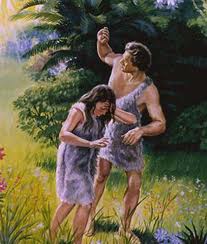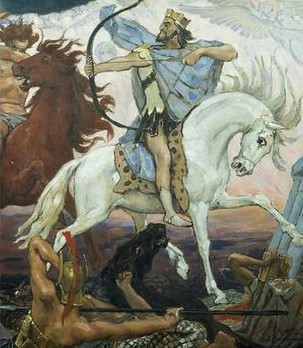The Hebrew Bible, better known as the Old Testament, consisting of 39 books were written over a period of 1100 years from approx. 1445 BC to 300 BC by about 29 different authors. The books were written on animal skin and were likely kept as a scroll. So, no committee sat down and said, “Let’s write a Bible.” Instead, the Bible was organically assembled as inspired human authors each spoke to the unique needs of their own generations. Hebrews 1:1 puts it like this: “God spoke to our forefathers through the prophets at many times and in various ways.” Those forefathers were Moses, Samuel, David, Solomon, Isaiah, Jeremiah, and a bunch more.
Those men wrote down what God told them to write–which means they had to be literate–usually on a scroll made from animal hide. Sometimes they jotted direct quotes: “I am the LORD your God. I will be your God and you will be my people.” Other times, they wrote what they experienced (Nehemiah rebuilding the wall), what they felt (David in Psalms), or what happened in previous age (Moses writing Genesis after it happened many years ago).
In any case, God inspired the writers to write. If God commanded you to write and proclaim what He wanted to say, you cannot hold it back. Listen to what Jeremiah wrote in Jeremiah 20:9: “Then I said, “I will not make mention of Him, nor speak any more in His name.” But His word was in my heart like a burning fire shut up in my bones; I was weary of holding it back, and I could not.” Do you sense the power behind the motivation? By the first century, Peter wrote, “…knowing this first, that no prophecy of Scripture is of any private interpretation, for prophecy never came by the will of man, but holy men of God spoke as they were moved by the Holy Spirit” (2 Peter 1:20-21).
God is zealous about His word. In the Psalm 138:2, it is written “…For You have magnified Your word above your name.” If this is true, then the writing of His word was under His direction, breathing on the writers what was in His heart for them to write.
Neither did anyone have the idea of a “canon.” Canon is just a technical term for Bible; it means “rule” or “standard.” It’s a set list of books that religious scholars consider Scripture, “the inspired word of God.” Theologians like to say the church didn’t create the canon; they just recognized and accepted the canon already in use by Holy Spirit in-dwelt followers of Christ.
Where Did the Old Testament Come From?
How did the particular books in our Old Testament make it into the canon? That was pretty much based on common usage and widespread authority. “For Moses has been preached in every city from the earliest times and is read in the synagogues on every Sabbath” (Acts 15:21).
Also of interest was how much care and effort has been put into preserving and copying the scrolls. Of course, it meant a lot if the book in question claimed to be the word of God, especially if copying from a revered prophet, like a Moses or David.
No one knows for sure, but at some point, the idea of a “closed canon” (which means “It is complete and includes everything.”) reached a tipping point. Some scholars think that this may have happened as early as 300 BC.
The Septuagint
There was 400 years of silence from the writing of Malachi, the last book of the Old Testament and the appearance of John the Baptist. This period is called 400 years of silence because there was no prophet who actively prophesied. The devout Jews were looking forward to the coming of Messiah but not much was happening. At this time, a group believed to be seventy scholars took that task of translating the Old Testament into Greek, which was the popular language of the time of the known world. This was around 200 BC, in the post Alexander the Great era. The Jews had started speaking Greek and many lost their ability to read Hebrew.
The story goes that the twelve tribes of Israel each sent six scholars to Alexandria, Egypt, seventy-two in all, who translated the Hebrew bible into Greek. We call it the Septuagint (Latin for “seventy”). That’s quite a remarkable task, because all 39 of our Old Testament books were included in the Septuagint! (Along with several apocryphal books included in Catholic and Orthodox Bibles).
Our English Old Testament was translated from the Septuagint and the content, all 39 books have been that way since at least 200 BC–more than two thousand years ago.
The Bible Jesus read
It’s pretty clear that the Lord Jesus and the disciples read and used the same Old Testament we have. It was not in book form then but it was in scrolls. In fact, some of Jesus’ quotations of the Old Testament match the Septuagint version, which means that Jesus felt comfortable using a translation.
Jesus believed the Old Testament was the word of God. He would often say, “It is written….” Or, He would ask, “Have you not read…?”
He also believed the Old Testament was factually true. He referred to Adam, Eve, Abel, Noah, Moses, Lot, Elijah, and Jonah as historical figures. And He said the Scriptures cannot be altered, abolished, broken, nor can they pass away.
Jesus also made the distinct statement that the Old Testament was all about Him! After the resurrection He told His disciples, “These are the words which I spoke to you while I was still with you, that all things must be fulfilled which were written in the Law of Moses, the Prophets and the Psalms concerning Me.” (Luke 24:44).
In all, the New Testament quotes all but five Old Testament books in more than 300 passages.
Where Did the New Testament Come From?
After the death of Jesus, His disciples proclaimed the good news of the gospel orally for about 30 years. The teachings were referred to as –“oral tradition.” However, Christianity was growing into a powerful force that it makes sense to codify this oral tradition. By 70 AD they started to write about His life and teachings and also about the early church. Luke, who penned a gospel and also Acts, put it this way:
Many have undertaken to draw up an account of the things that have been fulfilled among us, just as they were handed down to us by those who from the first were eyewitnesses and servants of the word. “Therefore, since I myself have carefully investigated everything from the beginning, it seemed good also to me to write an orderly account for you, most excellent Theophilus, so that you may know the certainty of the things you have been taught.” (Luke 1:1-4)
Toward the end of the first century, a collection of Christian writings took shape and circulated among the churches. Not all, however, were canonical. For example, during the Roman persecution, when their oppressors demanded that Christians hand over their Scriptures, some surrendered their copies of the Shepherd of Hermas (not “quite” canonical) but hid their “real” Bibles.
The four gospels as we know them–Matthew, Mark, Luke, and John–emerged winners. They received wide circulation, along with the Book of Acts as did the writings of Paul, which were collected into a single body of work. Churches also began to archive copies of Paul’s epistles. So, a fixed list was starting to be recognized. In the face of a challenges by a those that make up their own list, the orthodox church, which answered by affirming the four gospels, Acts, and all the epistles of Paul.
“Hey, Why Don’t We Make a New Testament!”
Also around 180 AD, Irenaeus first mentioned the idea of a “New Testament” to go with the “old” canon. That was important because Irenaeus was a disciple of Polycarp who was a disciple of John–the original “eyewitness” John. And Irenaeus was very well respected, so the idea started to catch on.
But it was finally Athanasius, the bishop of Alexandria, who once and for all nailed down the official New Testament. There was a tradition. Every Easter, the bishop of Alexandria would send a letter and, among other things, give his take on the “authoritative” books. In his 367 AD Easter letter, Athanasius acknowledged all 27 of our books. And they were books already in wide use. So, the official sync date for the Bible we use today is 367 AD. Early on, the books were written in scrolls and parchments. It was only upon the invention of the printing press in 1440 that a combined Old and New Testament was possible in a book form.
The Church was very methodical in reference to the New Testament canon. Several criteria were necessary in order for a writing to be accepted,5 but we will mention three here. First, the document in question had to conform to the rule of faith, “conformity between the document and orthodoxy, that is, Christian truth recognized as normative in the churches.”6 Second, the document required some sort of apostilicity, “which as a criterion came to include those who were in immediate contact with the apostles.”7 Third, “a document’s widespread and continuous acceptance and usage by churches everywhere” 8 was taken into consideration.
That list was later affirmed at synods (“official” religious meetings) at Hippo in 393 AD and Carthage in 397 AD, both of which were attended by Saint Augustine (in his pre-saint days). The canon was closed. No serious challenges since. That’s a pretty good Bible.
The Bible we have today is the Bible God wanted us to have. It has been a beloved book and credited for the salvation and spiritual growth by many multitudes.
Thank you to Dr. Patrick Morley (Man in the Mirror) for most of the above material.
Revised 2/17/2021





